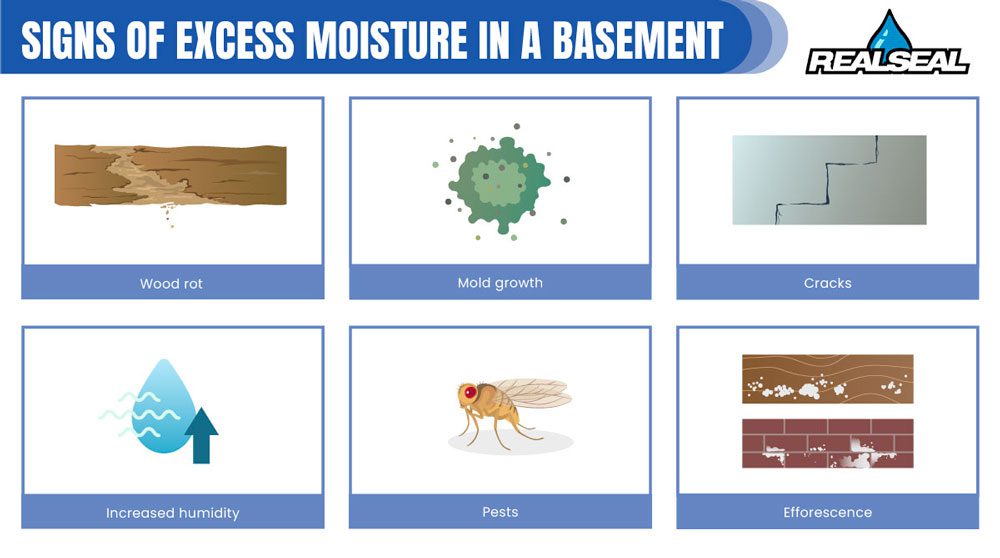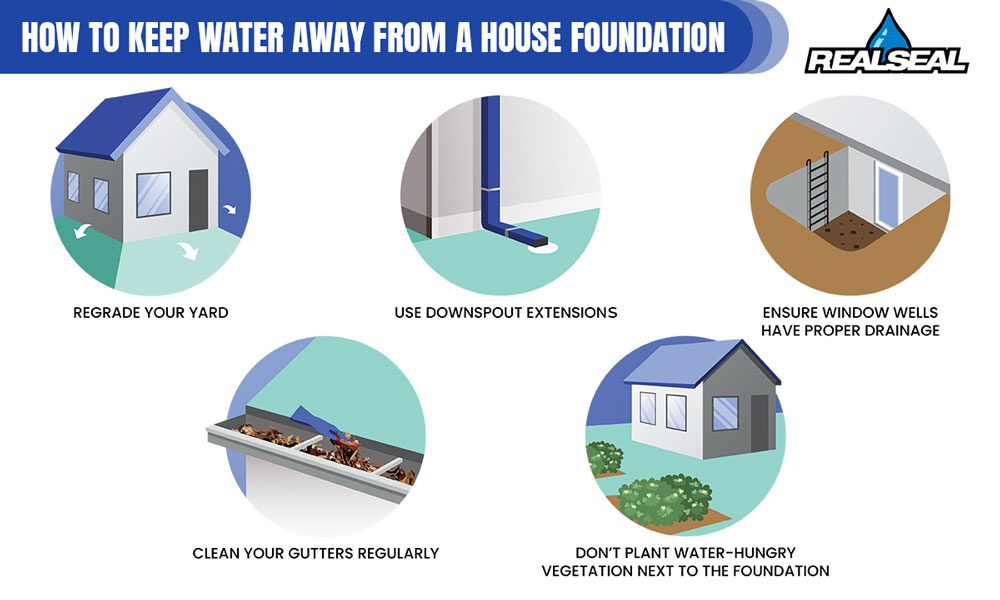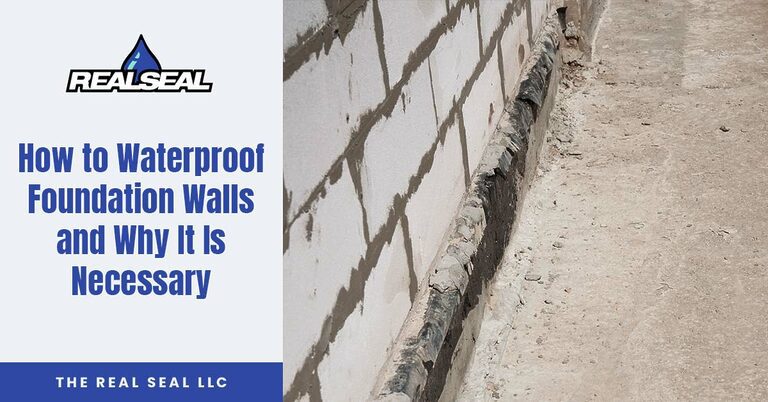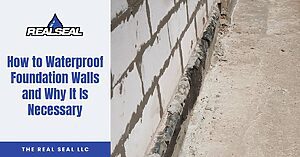Water seepage can turn your dream home into a damp nightmare, with repair costs often running into the thousands. But did you know that the cost of waterproofing your foundation walls is just a fraction of the potential repair expenses resulting from water damage? Before the rain clouds gather and your basement becomes an unintended indoor pool, understanding the why and how of waterproofing foundation walls can save you money and preserve the integrity of your cherished home. In this blog post, we’ll dive into the importance of this critical home maintenance step and tell you how to ensure a dry and secure foundation for years to come.
Signs of Excess Moisture in a Basement
Watch for the following signs of moisture in a basement. They can alert you to inspect the foundation and watch for additional progression as these problems worsen.
Mold: Due to the high humidity in most basements, mold is often an issue. It can begin to grow on the walls and floors of the basement. At first, a musty smell might be all you notice.
Wood Rot: If moisture affects the wooden floor joists, the floor’s structural integrity could be jeopardized. It can also lead to a problem with bouncy floors.
Efflorescence: You may not notice standing water in your basement, but if you see efflorescence, then water is a problem. Efflorescence occurs when water seeps through your concrete walls, and as it evaporates, it leaves behind a white salt deposit.
Increased Humidity: As more moisture enters the basement, the humidity level can increase. Due to the stack effect, which pulls air out of the basement into your home, the humidity levels may also be higher in your living space.
Cracks: Water may build up in the soil outside your basement, putting hydrostatic pressure on the foundation walls and causing cracks. As the foundation walls crack, water may be able to enter and further weaken the wall.
Pests: Several types of pests may also be a problem due to the moisture in the basement. This includes small insects, such as fruit flies.

What Is Involved with Basement Waterproofing?
Before the basement waterproofing process takes place, some repairs may be necessary. Repairs could include installing window wells, drains, and covers. If there are already foundation cracks, they can be repaired using carbon fiber straps or epoxy injections.
After the repairs have taken place, it is time to begin waterproofing the foundation walls. Exterior basement waterproofing can occur on the outside of the foundation walls, but that will require excavation to expose the walls. Interior basement waterproofing is also an option. In this case, a vapor barrier can be installed on the inside of the basement wall. This thin layer of polyethylene sheeting covers the wall completely, preventing moisture from entering through the wall and into the basement area.
It’s Important to Keep the Ground Around the Home Dry
Basement waterproofing works best when excess groundwater is removed via a drain tile system and channeled to a sump pit. Once the water is in the sump pit, it can be pumped out of the basement using a sump pump. Other things you can do to help keep the soil around the foundation dry include the following:
- Install downspout extensions – Most downspouts drain the water near the foundation walls. This can be a problem, as it could lead to soil moisture buildup and possible hydrostatic pressure. Gutter extensions carry the water away from the foundation before release.
- Clean gutters regularly – Clogged gutters can cause water to spill over the side of your house and soak the ground around the foundation.
- Regrade your yard, if necessary – You want groundwater to drain away from the foundation, not toward it.

Basement Waterproofing Is Not a DIY Project
Basement waterproofing is relatively straightforward, but it must be done correctly to be effective. Many DIY basement waterproofing jobs fall short of the mark, so we don’t recommend it. Some of the steps necessary for effectively waterproofing a basement are not easily achieved by the homeowner. Even though installing the vapor barrier on the inside of the basement wall sounds easy, a small mistake can allow water to enter, increasing moisture in the basement and causing additional problems.
If you live in Chicagoland and want information on how The Real Seal can properly waterproof your foundation walls, contact us today to schedule a free evaluation and receive an estimate for basement waterproofing.






